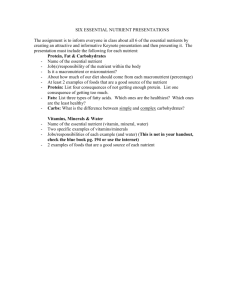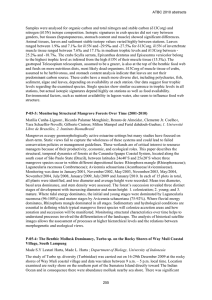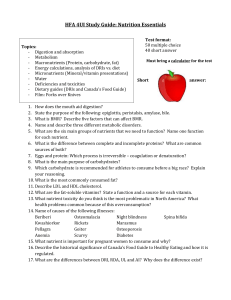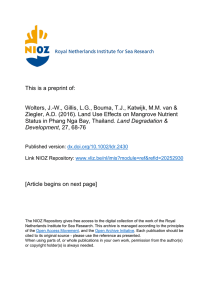Rhizophora mucronata contrasted mangrove settings from the French Scattered Islands, Western
advertisement
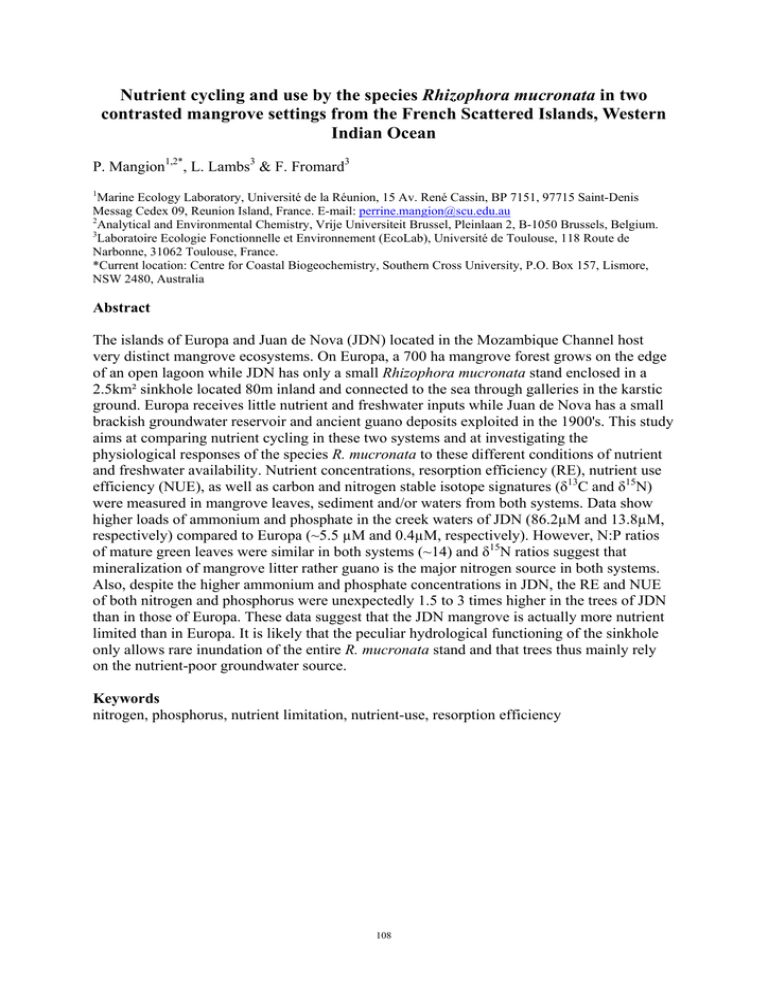
Nutrient cycling and use by the species Rhizophora mucronata in two contrasted mangrove settings from the French Scattered Islands, Western Indian Ocean P. Mangion1,2*, L. Lambs3 & F. Fromard3 1 Marine Ecology Laboratory, Université de la Réunion, 15 Av. René Cassin, BP 7151, 97715 Saint-Denis Messag Cedex 09, Reunion Island, France. E-mail: perrine.mangion@scu.edu.au 2 Analytical and Environmental Chemistry, Vrije Universiteit Brussel, Pleinlaan 2, B-1050 Brussels, Belgium. 3 Laboratoire Ecologie Fonctionnelle et Environnement (EcoLab), Université de Toulouse, 118 Route de Narbonne, 31062 Toulouse, France. *Current location: Centre for Coastal Biogeochemistry, Southern Cross University, P.O. Box 157, Lismore, NSW 2480, Australia Abstract The islands of Europa and Juan de Nova (JDN) located in the Mozambique Channel host very distinct mangrove ecosystems. On Europa, a 700 ha mangrove forest grows on the edge of an open lagoon while JDN has only a small Rhizophora mucronata stand enclosed in a 2.5km² sinkhole located 80m inland and connected to the sea through galleries in the karstic ground. Europa receives little nutrient and freshwater inputs while Juan de Nova has a small brackish groundwater reservoir and ancient guano deposits exploited in the 1900's. This study aims at comparing nutrient cycling in these two systems and at investigating the physiological responses of the species R. mucronata to these different conditions of nutrient and freshwater availability. Nutrient concentrations, resorption efficiency (RE), nutrient use efficiency (NUE), as well as carbon and nitrogen stable isotope signatures (δ13C and δ15N) were measured in mangrove leaves, sediment and/or waters from both systems. Data show higher loads of ammonium and phosphate in the creek waters of JDN (86.2µM and 13.8µM, respectively) compared to Europa (~5.5 µM and 0.4µM, respectively). However, N:P ratios of mature green leaves were similar in both systems (~14) and δ15N ratios suggest that mineralization of mangrove litter rather guano is the major nitrogen source in both systems. Also, despite the higher ammonium and phosphate concentrations in JDN, the RE and NUE of both nitrogen and phosphorus were unexpectedly 1.5 to 3 times higher in the trees of JDN than in those of Europa. These data suggest that the JDN mangrove is actually more nutrient limited than in Europa. It is likely that the peculiar hydrological functioning of the sinkhole only allows rare inundation of the entire R. mucronata stand and that trees thus mainly rely on the nutrient-poor groundwater source. Keywords nitrogen, phosphorus, nutrient limitation, nutrient-use, resorption efficiency 108

